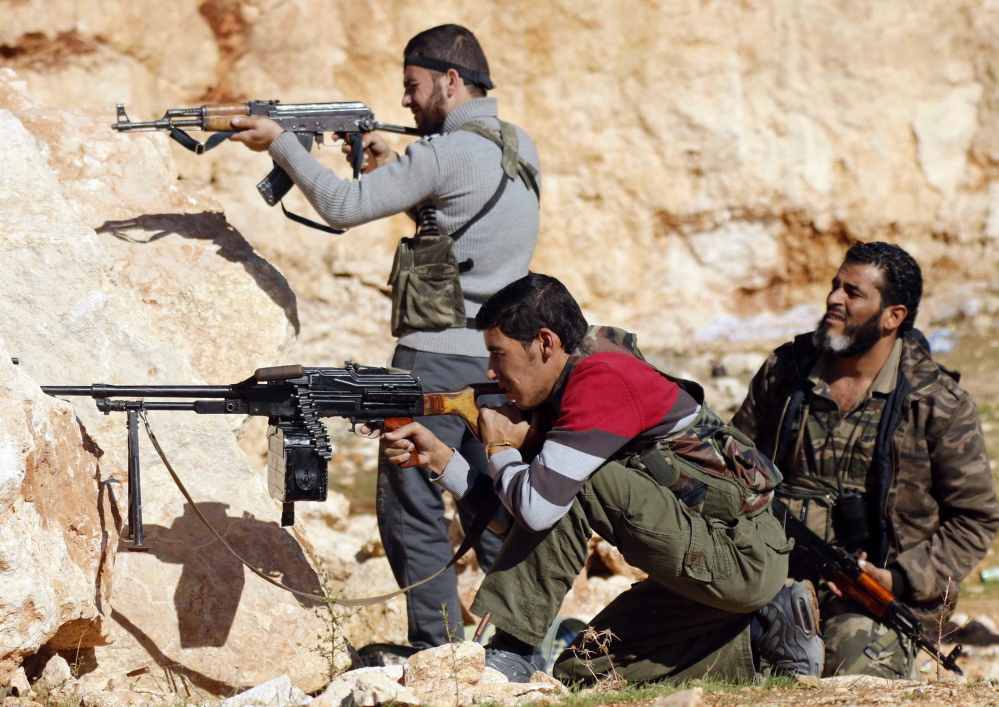BEIRUT — Syrian President Bashar Assad is taking advantage of the U.S.-led coalition’s war against the Islamic State group to pursue a withering air and ground campaign against more mainstream rebels elsewhere in the country, trying to recapture areas considered more crucial to the survival of his government.
As U.S. and allied jets swoop freely over towns and cities under control of extremists in northern Syria, the Syrian army has scaled back its air activity over areas of Islamic State control, doing as little as possible there to avoid confrontation. Instead, Assad’s troops are now focusing their energies on the country’s two largest cities, Damascus and Aleppo.
“Whereas previously the Syrian regime had some interest or some level of obligation to take direct action against ISIS, to the extent that the American military is now doing this, the Syrians don’t have to do it,” said Christopher Harmer, senior naval analyst at the Washington-based Institute for the Study of War.
While few people think the American and Syrian militaries are actively cooperating or coordinating their operations, there appears to be a tacit alliance, ensuring at the very least that Syrian military operations would not come into conflict or friction with any American or allied aircraft.
The overall strategic picture of the war has hardly changed since the coalition strikes began in Syria and neighboring Iraq. Syrian rebels have intensified their operations in some areas, particularly south of Damascus, making noteworthy advances in Daraa and Quneitra provinces. But at least for now, Assad is successfully hanging on to areas where it counts for his survival, and rebels fighting to topple him are increasingly demoralized and mistrustful of U.S. pledges of support.
The U.S. on Monday airdropped weapons and other assistance over the Kurdish Syrian town of Kobani – something it hasn’t done for other Syrian rebels, some of whom are fighting Assad and Islamic State at the same time.
Activists say the Syrian military has meanwhile escalated its attacks against more mainstream rebels.
On Tuesday, the Britain-based Syrian Observatory for Human Rights said it had documented more than 200 government airstrikes in the past 36 hours, most of them targeting rebel-held areas of Aleppo, the Damascus suburbs and southern Syria.
Send questions/comments to the editors.



Success. Please wait for the page to reload. If the page does not reload within 5 seconds, please refresh the page.
Enter your email and password to access comments.
Hi, to comment on stories you must . This profile is in addition to your subscription and website login.
Already have a commenting profile? .
Invalid username/password.
Please check your email to confirm and complete your registration.
Only subscribers are eligible to post comments. Please subscribe or login first for digital access. Here’s why.
Use the form below to reset your password. When you've submitted your account email, we will send an email with a reset code.